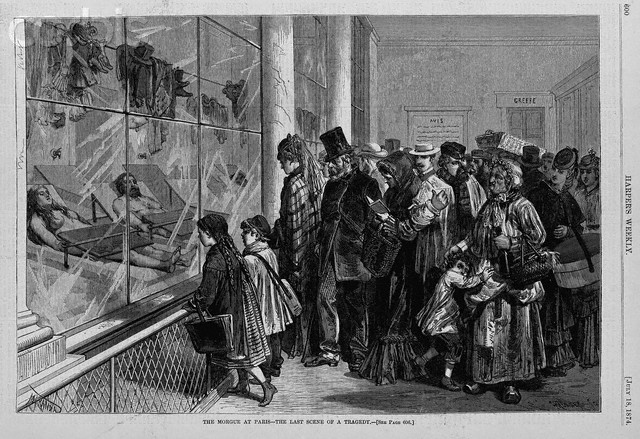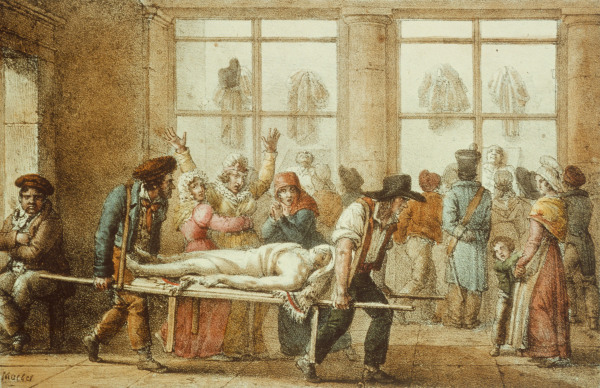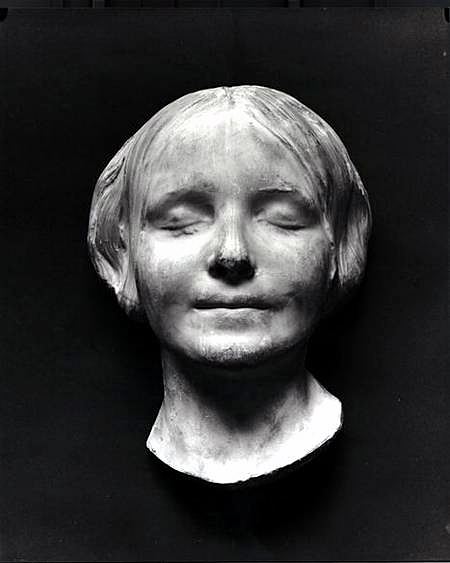Morgue

The word morgue has a bizarre history. The initial definition (in French) was morguer– to stare, to have a fixed and questioning gaze. What you were meant to stare at were unidentified dead bodies– in a world before fingerprints, dental records, and DNA.

In the late 1800’s, the Paris morgue became the place to see (dead bodies) and be seen (looking at dead bodies). People would come by the thousands a day to look at the unidentified dead in the morgue; it was public death theater. Spectacle!
The spectators would line up outside for hours waiting to get in. Vendors would sell fruit and pastries and toys outside. Tourism at its finest. Finally they would be let into an exhibit room where the corpses were laid out on slabs behind a large glass window. There was an air of mystery to it all, perhaps they would fulfill their “duty” and actually aid in solving a crime.

The book Spectacular Realities: Early Mass Culture in Fin-de-Siecle Paris called the Paris morgue “a spectacle of the real.” This “real” was important because it was during the late 1800’s that Western culture began to pull away from death. Seeing a dead body wouldn’t have been as scandalous and thrilling if you were used to seeing them laid out in the parlor. But taking dead bodies out of a society makes them transgressive.
Eventually it became too transgressive, too popular, too scandalous, and the morgue exhibitions were shut down for the public. They remain behind (very) closed doors today.

I can almost guarantee that if there was a public display of corpses now, say, at the Los Angeles Coroner’s office, people would go. Hell, I’d go– and I see corpses everyday.
Dearest Landis Blair has offered to send his original deathly doodle to the person who suggests said doodle. In this case, it was the lovely Bess Lovejoy. We’ll be in touch Bess. Send your suggestions, deathlings!
